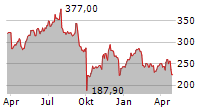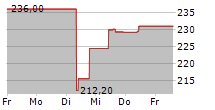
LONDON, Oct. 8, 2024 /PRNewswire/ -- Second-hand clothing (SHC) is stimulating billions of dollars in GDP contributions and supporting hundreds of thousands of green jobs across Europe and Africa, a new report from Oxford Economics reveals today.

The report The Socio-Economic Impact of Second-Hand Clothes in Africa and the EU27+ reveals that the sector - a vital part of a future circular textile economy - contributed over $100 million to the GDP of Ghana, Kenya and Mozambique in 2023.
In Ghana, second-hand clothing from the EU27+ contributed an estimated $76 million to the country's GDP (of which $35 million was direct), supporting at least 65,000 formal and informal jobs in 2023. That same year, $17 million was contributed to Kenya's GDP ($9.2 million directly) and $10.7 million to Mozambique's ($2.7 million directly). There were 6,300 people in Kenya's formal workforce and at least 68,000 informally. In Mozambique, a total of at least 20,700 formal and informal roles were supported.
In these three countries, it is estimated that more than 100,000 jobs are sustained through the SHC trade with the EU27+. Jobs range from wholesale importing to transporting, retailing, and tailoring. Employment generated helps alleviate poverty by offering income-generating opportunities to those who might otherwise be unemployed or underemployed, enabling people to support dependents. The informal SHC industry supports several opportunities for women and youth; 77% of the interviewed informal retailers in Ghana, Kenya, and Mozambique were women, and approximately 70% younger than 45 years old.
As the report only quantifies the socio-economic impact of the direct trade between Ghana, Kenya and Mozambique and the EU27+, the impact would be even greater factoring in clothing that arrives via intermediary clothing sorting centres in the Middle East and Asia.
It is the first comprehensive analysis of the sector's entire value chain and an attempt to quantify the sector's socio-economic impacts across two continents. The sector bridges global supply and demand by efficiently channelling surplus clothing from the Global North to the Global South, where demand for affordable, quality garments continues to grow, ensuring that clothing stays in circulation, helping to meet climate targets and protect the environment.
The report highlights how SHC enables sustainable development while providing an important source of quality, affordable clothing for millions across Africa. This affordability plays a crucial role in improving living standards and enabling consumers to allocate more of their limited income to other essential needs such as food, healthcare, and education. The sector also contributes to poverty alleviation by creating employment and entrepreneurship opportunities.
While the sector is an important source of affordable clothing as well as jobs in many African countries, many importers and traders suffer the impact of high import tariffs on second-hand clothing, which impacts their competitiveness. Rather than boost local manufacturing, this further supports the import of cheaper new and lower quality fast-fashion from China, at a huge environmental cost.
If steps are not taken to strengthen the sector, its success in supporting national climate targets and the Sustainable Development Goals, particularly around poverty, women's inclusion and responsible consumption, could be undermined.
The report was commissioned by Humana People to People and Sympany+.
Muimui Karoline Akatama, Circular Textiles Spokesperson, Global South at Humana People to People, said "Governments and policymakers have a unique opportunity to support a sector that not only creates green jobs and contributes to poverty alleviation, but also holds vast untapped potential for sustainable growth across Africa."
Johanna Neuhoff of Oxford Economics added, "With the right legislative backing and investment in sorting infrastructure, waste management, and partnerships with local manufacturers, the second-hand clothing sector can catalyse economic transformation while promoting a circular textile economy that benefits both people and the environment."
Recommendations include supportive legislation and greater investment from governments and policymakers to support the growth of the second-hand clothing sector. This includes lower import tariffs, investment in infrastructure and technology to manage waste, policies to support the informal workforce, and cooperation with businesses.
The assessment of the socioeconomic impact of SHC in the EU27+ and the three selected African countries used a standard analytical framework, known as an economic impact assessment. This involved quantifying the three economic impact channels, namely the direct, indirect (supply chain), and induced (wage-financed consumption expenditure) channels:
- The direct impact relates to the operations of all organisations and businesses in the SHC industry, namely the collection, sorting, and retail of SHC in the EU27+, as well as the wholesale, formal retail, and informal retail of SHC in Ghana, Kenya, and Mozambique connected to the direct imports of SHC from the EU27+.
- The indirect impact is the economic activity and employment sustained in the industry's supply chain via the spending of SHC organisations and companies on goods and services in the EU27+, Ghana, Kenya, and Mozambique.
- The induced impact comprises the wider economic benefits that arise from the payment of wages by the industry and the businesses in its supply chain. Employees who receive wages spend their earnings as consumers in the economy of their country, stimulating further economic activity and jobs.
- The three channels of impact combined make up the second-hand industry's total core economic impact.
ABOUT OXFORD ECONOMICS
Oxford Economics was founded in 1981 as a commercial venture with Oxford University's business college to provide economic forecasting and modelling to UK companies and financial institutions expanding abroad. Since then, we have become one of the world's foremost independent global advisory firms, providing reports, forecasts, and analytical tools on more than 200 countries, 100 industries, and 8,000 cities and regions. Our best-in-class global economic and industry models and analytical tools give us an unparalleled ability to forecast external market trends and assess their economic, social, and business impact.
Headquartered in Oxford, England, with regional centres in New York, London, Frankfurt, and Singapore, Oxford Economics has offices across the globe in Belfast, Berlin, Boston, Cape Town, Chicago, Dubai, Dublin, Hong Kong, Los Angeles, Mexico City, Milan, Paris, Philadelphia, Stockholm, Sydney, Tokyo, and Toronto. We employ 450 staff, including more than 300 professional economists, industry experts, and business editors-one of the largest teams of macroeconomists and thought leadership specialists. Our global team is highly skilled in a full range of research techniques and thought leadership capabilities from econometric modelling, scenario framing, and economic impact analysis to market surveys, case studies, expert panels, and web analytics.
Oxford Economics is a key adviser to corporate, financial and government decision-makers and thought leaders. Our worldwide client base now comprises over 2,000 international organisations, including leading multinational companies and financial institutions; key government bodies and trade associations; and top universities, consultancies, and think tanks.
https://www.oxfordeconomics.com/
ABOUT HUMANA PEOPLE TO PEOPLE
Humana People to People is a Federation of 29 independent associations involved in humanitarian and sustainable development activities. Members of the Federation Humana People to People are active in 46 countries in Africa, Asia and Central and South America.
https://www.humana.org/
In Angola, Guinea-Bissau, Malawi, Mozambique and Zambia, members of the Federation Humana People to People operate a combination of second-hand clothing sorting centres, wholesale outlets and retail shops that are run as social enterprises. The proceeds from the sale of clothes and shoes are invested in social development projects in each country. In 2023, Humana People to People's global second-hand clothing operations secured over $31.6 million in development funding.
ABOUT SYMPANY
Sympany+ is a Dutch non-governmental organization (NGO) dedicated to sustainable textile circularity. The organization focuses on creating a closed-loop system for post-consumer textiles through various projects and research initiatives. Additionally, Sympany+ ensures that all working conditions within their projects adhere to OECD guidelines.
https://www.sympany.nl/
Photo - https://mma.prnewswire.com/media/2525607/Africa.jpg
![]() View original content:https://www.prnewswire.co.uk/news-releases/second-hand-clothing-driving-sustainable-economic-growth-and-job-creation-in-africas-green-economy-new-oxford-economics-research-shows-302270201.html
View original content:https://www.prnewswire.co.uk/news-releases/second-hand-clothing-driving-sustainable-economic-growth-and-job-creation-in-africas-green-economy-new-oxford-economics-research-shows-302270201.html




